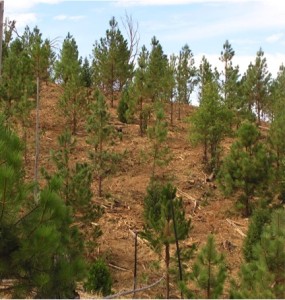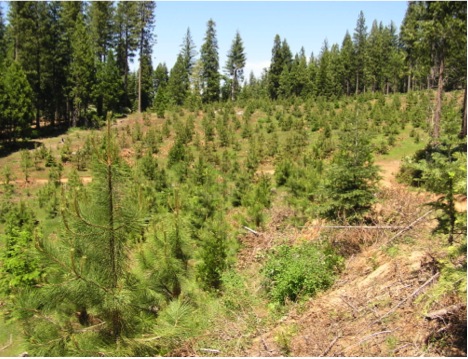For decades the Forest Service has followed forestry-driven policy direction at the national level that attempts to grow large volumes of wood-producing trees to meet the demands of the American consumer. Unfortunately, that “growing a productive crop of trees” approach has resulted in densely stocked forests that are highly prone to wildfire. Over the past decade, and especially in the past few years, Forest Service fire scientists and ecologists have emphasized that historic pre-European Sierra Nevada forests were predominantly composed of open, fine scale mosaic conditions with clumps and patches of trees mixed with widely dispersed individual trees, openings, brush patches, and bare spots. By having uneven-aged conifers scattered amidst bushes, hardwoods, and open glades, there was no consistent fuel for wildfires to burn through rapidly and intensely. A second key lesson learned from recent mega-fires is that fire will burn through forests either under managed, prescribed burn conditions or in uncontrolled, summertime wildfire events. Forests will burn eventually, one way or the other. Historic, frequent, low-intensity natural fires kept forest fuels at low levels and kept forests open. Now with the Rim Fire Reforestation Plan, the lessons shared by renowned scientists such as Scott Stephens and Malcom North appear to have been put aside. Local Forest staff protest that if they don’t grow a dense stand of trees planted close enough together to shade out the brush, then bushes and other vegetation may outcompete the conifers. CSERC’s position is that if they DO grow trees that densely, they are nearly guaranteeing that those forest stands will be highly vulnerable to wildfire. If we don’t learn from the lessons of past local events such as the Granite Fire, Complex Fire, Rogge Fire, Pilot Fire, Ackerson Fire, Early Fire, and Rim Fire, we are destined to repeat the same tragedies. Currently the Forest Service plans to plant nearly 200 trees per acre spaced 15’ apart on ridges. On mid-slope “open” areas they plan to plant 12’ X 12’ with 5 rows of trees and then skip a row in both directions – 210 to 250 trees per acre. On mid-slope “old forest” sites they aim for 12’ spacing with 250 to 303 trees per acre, and in the moist drainage zones they propose to plant 303 trees per acre. On every site they aim to plant 200 to 300 trees per acre – a far cry from the open, park-like forest conditions that were here when natural wildfire conditions helped shape the forest landscape. CSERC believes a middle ground plan can reduce herbicide use, reduce planting density, and produce a fire resilient forest.



